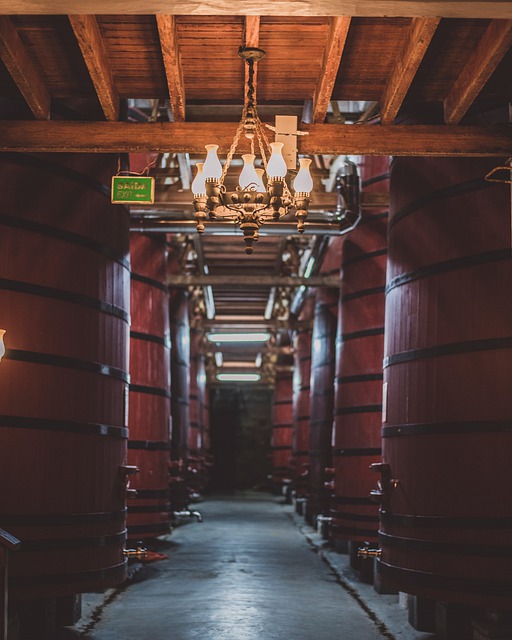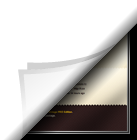
Wine has traditionally been stored in caves. The best wine storage areas replicate these conditions as much as possible with little to no light, controlled humidity, and chilled temperatures. Unless you want to serve vinegar instead of wine to your guests after the wine becomes exposed to heat, you should keep your wine cooler between 45 to 65 degrees Fahrenheit. For more precise temperatures, you could use a variable capacity compressor that keeps the temperature within one degree Fahrenheit of the set point. A more consistent temperature will result in better wine storage. If you are buying expensive wine, you might consider obtaining a higher quality wine cooler that meets your requirements for long-term storage. For example, variable capacity compressors are usually found in more expensive units.
Sunlight can also damage wine and even the labels on the bottles. A unit with UV protected glass and dual panes can help avoid this problem with the added benefit of helping to reduce temperature fluctuations. Additionally, humidity levels should be controlled to about a 60 to 70% humidity level. A humidity level between 50 to 70% is considered safe, but corks will not get hydrated and will dry out below the 50% level. At this humidity level, even the best natural corks will shrink. If you are in an ultra-dry climate like Arizona, some manufacturers will offer a vaporizer accessory. Nevertheless, a humidity level above 80% is not the ideal environment for wine.
Ever wonder why wine racks always seem to display bottles on the sides, rather than upright. At least one reason is that this position keeps the corks hydrated and prevents them from drying out during long-term storage. Another reason is that horizontal racks may be considered more space efficient as compared to vertical racks. Despite this, vertical racks may still be a good choice for short-term storage, like parties.
Wood shelves are the best choice for shelves. This material reduces vibrations that would otherwise impact the wine. The optimal wood selection is natural, handcrafted, untreated beechwood. It is best to never stain the shelves.
Some other features of wine coolers that might impress your guests are telescopic rails that give easy and convenient access to bottles of wines. If you have various collections or display your wine during special occasions, label holders can be an added touch. If you would like to make sure that you serve guests wine that receives a permanent supply of odorless and fresh air, you can use a charcoal air filter. Even if another bottle happens to leak, the charcoal air filter will stop the other corks from getting contaminated by possible smells from the leaked bottle. Filters should be changed every six to eight months.
Other options include a VCC that reduces vibrations. Even at the lowest speed, there is virtually no vibrations and the VCC operates so quietly that one can hardly hear the engine. You might also consider some safety and alarm features. If the door is accidentally left open, the wine can be exposed to high temperatures. Alarms can be set to sound in the event of a change in temperature. Additionally, a safety thermostat can prevent overheating and provide undercooling protection.
The average refrigerator temperature is below 45 degrees Fahrenheit. Along with a lack of moisture, a temperature of 35 to 38 degrees Fahrenheit can result in dry corks and freeze the wine. The type of wine affects the ideal temperature range. For instance, red wine is maturing wine and require warmer temperature and longer storage times. Red wine should be stored around 50 to 67 degrees Fahrenheit, while white wine should be stored at the lower temperature range of 40 to 50 degrees Fahrenheit.
The typical AC standard compressor has one speed and a three-degree swing. With set point of 55 degrees Fahrenheit, the actual temperature range could be from 52 to 58 degrees Fahrenheit. A VCC compressor has a one degree, plus or minus, actual temperature swing from the set point, resulting in a very consistent temperature. VCC compressors are also very quiet with little to no vibration and are 25% more efficient than AC compressors. Another option is a smart compressor that adapts to activity in the home or retail environment.

If you are collecting only one type of wine, single zone coolers can offer seamless temperature function. Using a single zone cooler is slightly less expensive than other types of coolers. However, a single zone is not recommended for a variety of wines. A single temperature zone is not ideal as different varieties may require different levels of maturation.
Dual zone wine coolers have two separate compartments, usually separated by a horizontal partition. Each partition is a zone that has a different temperature. Because of this flexibility, dual zone is the most preferred cooler option by wine enthusiasts.
If dual zones are not sufficient, wine enthusiasts ay prefer tri zone coolers. This cooler type maximizes storage options. Some of them can hold up to 75 bottles. The multiple zones allow storage in the same cooler of different types of wines, alcoholic beverages like sparkling wine and champagne can be placed in their own zones. During installation, these coolers require full circulation from bottom to top.
Additional options for wine coolers include selecting an articulating hinge versus a hinge pin with a less tight connection. Concealed hinges are another hinge selection. Reduction of vibrations can be achieved with soft-closing doors. In a fully integrated installation, touch-to-open doors are another option. Still another alternative is to notch the panel at the top.
Aesthetic options are also available for wine cellars or coolers. One trend is European wine pantries. These pantries have the wine cooler set into and integrated within an undercounter cabinet. You might also like featuring your beverages in a wine column. These wine columns are usually paired with refrigerator columns. A wine cooler can also be freestanding. These freestanding wine coolers are typically 17” to 28” in width and can hold from eight to 175 or more bottles. With almost unlimited options for both restaurants and residential settings, wine coolers no longer have just an institutional appearance.
When selecting a wine cooler, you should keep in mind that the widths of the bottles will affect the fit into the cooler. Most sizes are approximately 2 3/8” to 4” wide. If sound is of concern, you may want to select a quiet wine cooler that ranges from 38 to 39 dB(A). Additionally, when integrating a wine cooler within a pantry unit and venting through the bottom, your installer should build a box vent through the toekick, up the backwall, and out the top. Connecting with a local dealer that offers a warranty is also a good method for obtaining the most ideal wine cooler.

